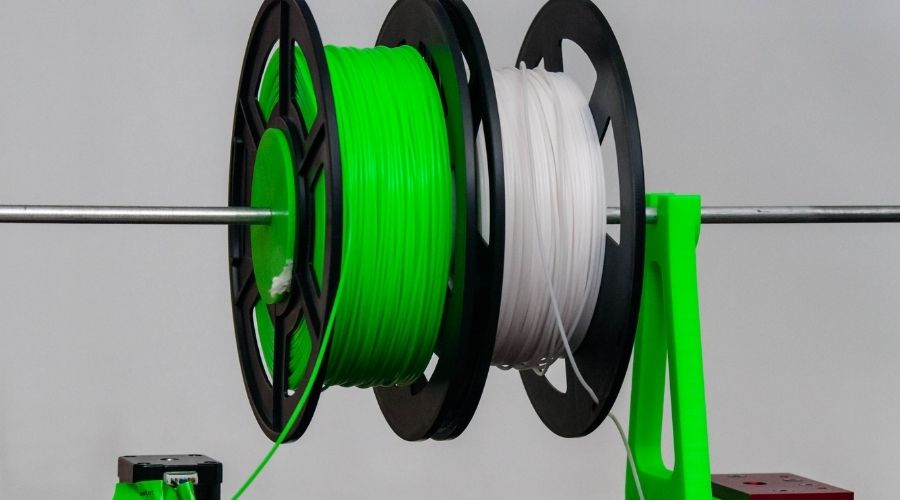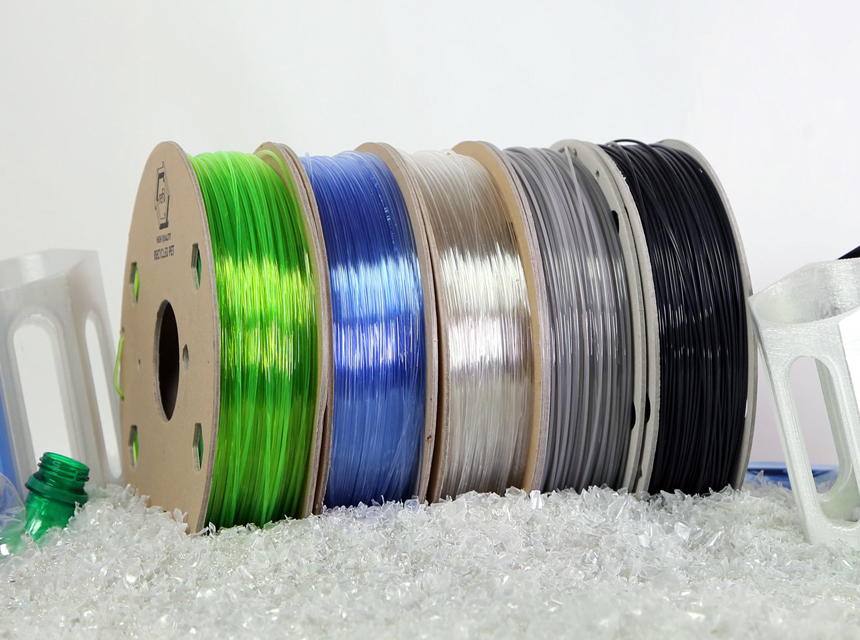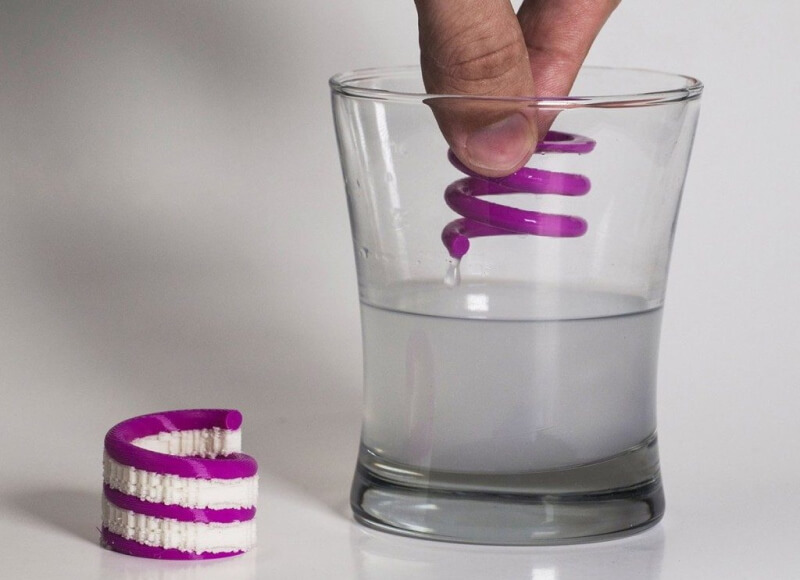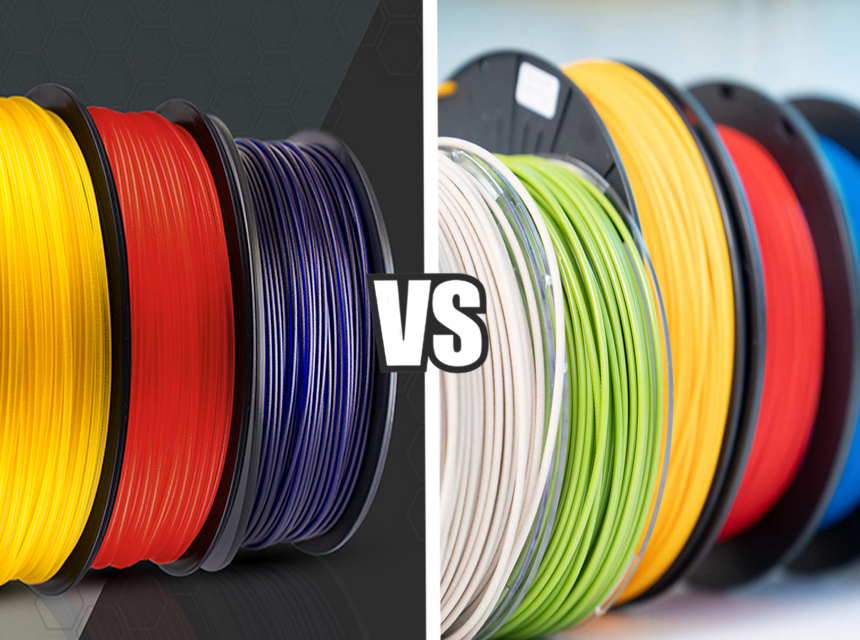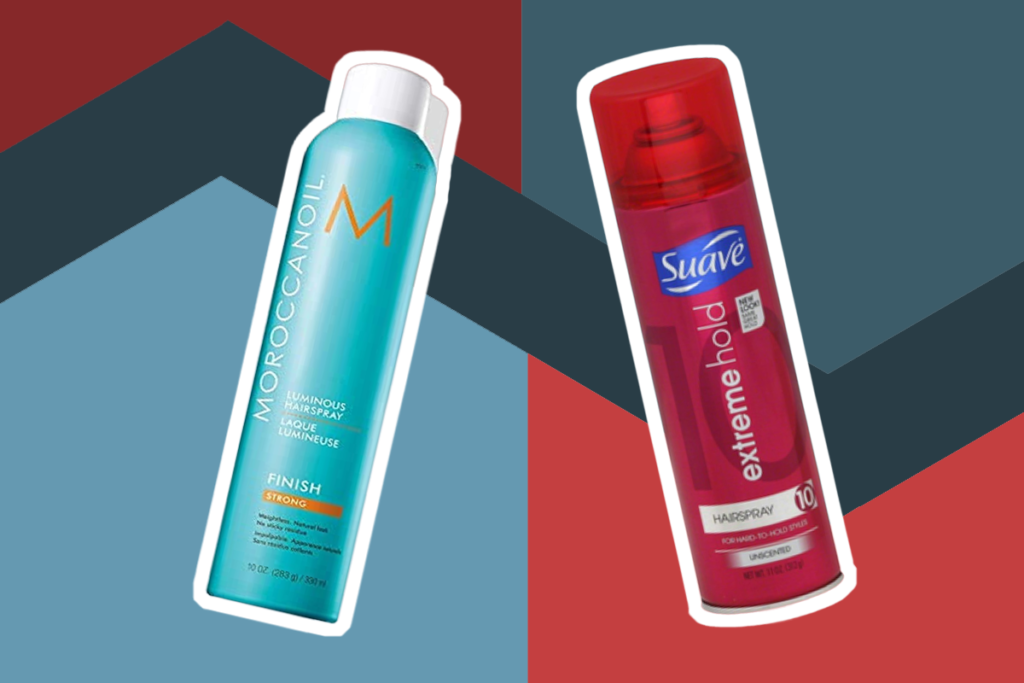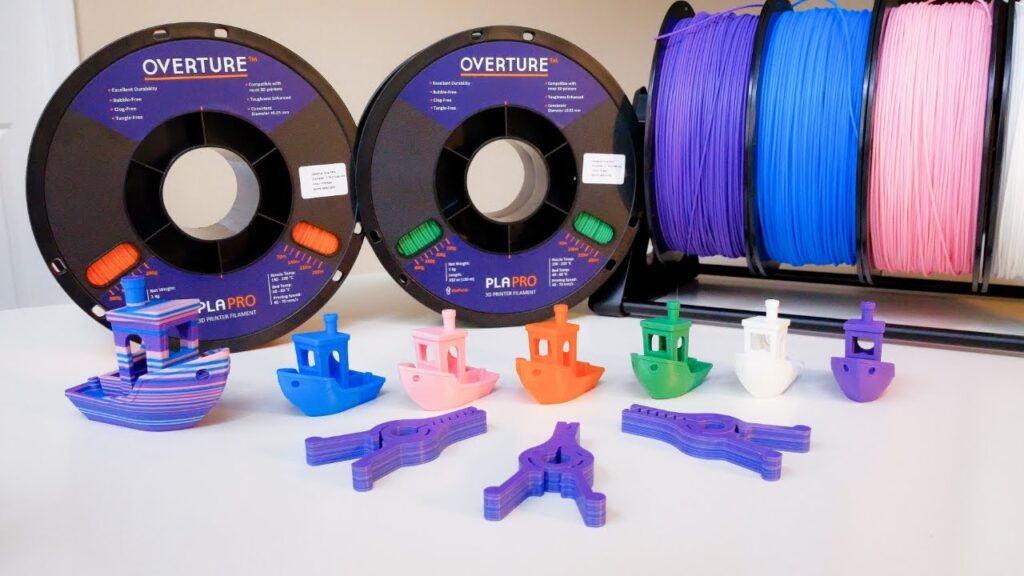

Have you recently invested in that snazzy 3D printer you’ve had your eye on? And now it’s time to choose the best material for the many projects you’re planning to print. PLA might be on the top of your list of potential material options, but what exactly is it, and how do you know if it’s perfect for your planned projects? PLA is by far the most popular material used in 3D printing. Aside from being extremely easy to use, it’s perfect for a diverse range of applications, including everything from small useable parts to fun DIY projects.
Choosing the perfect PLA filament can be challenging if you’re glancing at the market for the first time. Fortunately, we’ve done the leg work and narrowed down the best PLA filaments to help you make an informed decision. We’ve also included a nifty buying guide that highlights features such as dimensional accuracy, weight, color, and performance. Keep reading for all the info you need to make the best choice!
More features: no plugging, eco-friendly
The ANYCUBIC filament is a popular choice among users because of its accuracy and consistency. With a minimal dimensional tolerance of +/- 0.02 mm, the outflow is much smoother. A Clog-Free & Bubble-Free Design Patent guarantees smooth and stable prints. It’s easy to see why the ANYCUBIC filaments are considered the best options for outdoor use.
This nifty filament has made it to being labeled our editor’s choice because it has a variety of positive features that really enhance the quality of your print. In addition to the aforementioned tolerance, the spool is rolled neatly and its premium quality results in considerably less thread pulling and twisting. This provides a clean, less stringing print with a glossy finish.
Unlike many PLA filaments where adhesion is a common problem, low shrinkage and stable printing dimensions make the fusion between the layers particularly good, giving the user a better bridging result. There’s no worry about diameter changing often and creating thinner and thicker layers.
More features: 12 bundles, tangle-free tips, easy to print
The Mika 3D filament is currently one of the more popular color bundle packs and offers 12 different colors in 500g spools. All spools are 100% tangle-free and feature strong compatibility of 1.75 mm diameter. It also features a dimensional accuracy of 0.05mm. Other impressive features include a smooth feed, good melt, and ease of use. With a temperature range of 195 – 230℃, you’re guaranteed a smooth, clean print.
This filament is our premium pack because it’s a handy bundle of different colors. Not only is it ideal for beginners to learn the ins and outs of printing on small prints, but it’s also great for small projects. Users should just note that while there are 12 different colors, the spools are smaller than the usual 1kg spool – so it’s only ideal for smaller prints. Unlike the other PLA filaments in this review, the Mika offers users an extra gift in the form of one premium quality bottle of Solid Stick for their 3D printer head.
More features: many color options available, high stiffness
The Creality PLA filament boasts a stronger bond and overhang performance with a dimensional accuracy of 0.02mm. Clog-Free and Bubble-Free manufacturing patents ensure a smoother, more stable printing project. Filaments are completely dried for 24 hours before packaging.
We chose this filament as our best value option because it boasts superb layering, high rigidity, and excellent glossiness. It’s tougher and more durable than other PLA brands. This means you’ll get improved strength and impact resistance. This filament is different from the other options in this review because, unlike other PLA choices, the Creality is more flexible. This means you can store this filament for up to a year.
More features: upgraded formula, strict quality control, one-year warranty
If you own a FlashForge printer, then you’re already familiar with the quality of their filaments. This PLA filament, however, features a newly upgraded formulation to minimize the usual filament problems experienced by users. So, you can be assured of much less warping, curling and bubbles during printing. A quality FlashForge filament needs to make it to any list of PLA favorites because it offers a smoother, cleaner print.
Unlike many other PLA filament options, the FlashForge has anti-moisture ingredients that allow longer storage time without deteriorating the quality of the spindle.
More features: easy to use, beginner-friendly
If you’re just stepping into the fun world of 3D printing, then this filament is the ideal option to start with. With a 1.75 mm diameter and a tolerance of +/- 0.03 mm, it’s easy to use and will provide you with quality 1st prints. More good news is that HATCHBOX PLA can easily be used on most mainstream printers.
We chose this as our best beginner option because its quality and consistency make it easy for novice users to understand and get started with the basic settings. Expert printers, on the other hand, can push their designs to new limits without having to worry about tolerance, general printing issues, or purity.
HATCHBOX is well renowned for producing some of the highest quality PLA filaments on the market. Additionally, they also claim to have the largest selection of filaments and colors and affordable prices. Their filaments are ideal for creating prototypes, art, DIY designs, and a whole host of hobby models and toys. With its affordable price tag, it’s considered one of the best budget PLA filaments.
More features: enhanced toughness, clog and bubble-free, wide compatibility
SUNLU, often voted as the best quality PLA filament, is another brand commonly known to provide quality PLA filaments perfect for just about any 3D FDM printer. A few of the features that make this such a popular choice is its ease of use, optimized printing quality, and high purity. Additionally, you can expect low shrinkage and excellent layer bonding. Since these filaments offer a stricter tolerance of +/- 0.02 mm without any exaggeration, you can be assured of a cleaner, smoother print.
We added this quality SUNLU filament to our list because it offers users a clog-free, bubble-free printing experience. With its compatibility with most 3D printers, it’s ideal for beginners and experts alike.
Unlike many other filaments, this option provides a silky sheen effect on the prints. This is the extra feature you need to make projects seem elegant and professionally made. Good news for beginners and novice printers!
More features: fit most FDM printers, clog-free, less-tangle, bubble-free
If you’re looking for a wide variety of color options and less-tangle and clog-free prints, Overture PLA filament is worth considering. This nifty filament offers a dimensional accuracy of +/- 0.03 mm. Advanced CCD diameter measuring guarantees these filaments a 1.75 mm diameter. Full mechanical winding during production provides a tidy line which ensures less-tangle and less line-breaking. Since the inner spool design is larger, you can expect a smoother feed as well.
We added this filament to our list because it has been designed and manufactured with a clog-free patent, which is supposed to guarantee the user a smoother and more stable print. With these features, it’s easy to see why this brand is regarded as the ideal filament for lithophanes.
Unlike many different filaments on the market, Overture is both cost-effective and compatible with just about any 3D FDM printer. It’s considered by many as the best PLA filament for the Ender 3 PRO printer in particular.
More features: reduce jamming, low-warp, odorless, one-year limited warranty
Generally, the PLA filament option from Amazon performs well and produces quality prints. Additionally, it’s easy to work with and is more affordable than many of its competitors. While the filament is compatible with any FDM 3D printer, it’s important to check the spool size for compatibility.
Features that make this filament the perfect addition to our list is that it’s designed to reduce jamming. There’s no need for a heated bed, and it’s low-warp and odorless. In short, it’s amazingly simple and effortless to use!
Another impressive feature of the AMAZON brand is that it features a handy gauge on the side that allows the user to estimate how much filament is left after a print. This can be estimated in both weight and meters, making it a good way to determine if you’ll get another printout from your leftover spool.
More features: smooth printing, easy to print, high purity
If you’re looking for a filament that’s easy enough for beginners to use, as well as brightly colored to provide a rainbow finish, this option is it. Five fast colors make for a natural color transition that is natural and glossy. Users need to note that there are about 250g of each color. This option is often considered to be the best rainbow filament.
This colorful filament made it to our list because of its good viscosity between layers and has no warping. There’s less stringing, and it doesn’t jam your nozzles. Both experts and beginners can be assured of high purity and compatibility with most 3D FDM printers with no bubbling or clogging. A quality vacuum-sealed bag keeps the filament dry and dust-free. This will ensure your filament stays perfect for providing you with superior prints.
More features: premium formula, clogging-free, less-tangle, wide combability
Regarded by many as a top premium PLA filament, TECBEARS is a firm favorite for seasoned printers. Its high purity, superior layer bonding, and low shrinkage make it easy to meet the demands of different printing projects. Since the filament is vacuum-sealed using desiccants in nylon re-useable bags, filament quality is preserved.
Any filament that’s compatible with a variety of prints and boasts a low dimensional accuracy is worth choosing for your printing projects. By using a combination of nozzle temperatures ranging from 190°C – to 210°C and a bed temperature of 60°C – 80°C, you’ll have considerably better printing results.
This filament provides users with correct dimensions of 1.75 mm without exaggeration. The filament on the spool isn’t twisted, and as a result, users will experience fewer print fails. This brand features a wood PLA regarded by seasoned printers as the best PLA wood filament.
Deciding to print a 3D project using PLA can be overwhelming if you’re just starting out. Many 3D hobbyists will agree that if you don’t arm yourself with the right information, you could end up spending unnecessary money on the wrong type of PLA filaments. We’ve created a handy buying guide to help you identify the necessary features to consider when you’re narrowing down options. We’ll also answer a few common questions people ask when they’re buying PLA filament for the first time. Keep reading to get all the information you need!
Polylactic Acid, or PLA as it’s more commonly known, tops the choice of materials used when it comes to desktop 3D printing. But what is it exactly? Essentially, PLA is a vegetable-based plastic material, commonly manufactured using cornstarch as a raw material. Fermented plant material (such as cornstarch) is turned into a thermoplastic aliphatic polyester that’s very versatile and can be used for a variety of 3D applications.
PLA filaments come in wire on a spool. This spool is then fed into the extruder head, where the plastic is melted and deposited into a continuous extrusion on the printing tray.
PLA is one of the top filament choices for beginners for a bunch of reasons, including the following:
Buying PLA filament is not always as simple as picking the first option you find. It’s important to consider the various features that differentiate the many products on the market. Once you’ve identified the 3D project you’re going to make, it’s time to pick the best PLA filament brand for the job. Keep reading as we delve into the importance of features such as dimensional accuracy, color choices, and durability.
While PLA generally has a reputation for providing quality prints, cheaper brands can be brittle. It’s always a good idea to do some research on the brand you’re opting for. Reading a few product reviews will give you an idea of other users’ experiences with the quality of the PLA option you’re considering. Quality PLA has great detail reproduction making it ideal for models, ornaments, small toys, or even parts needed for other projects. The ANYCUBIC PLA 3D Printer Filament brand on our list is regarded by many as being superior in its category.
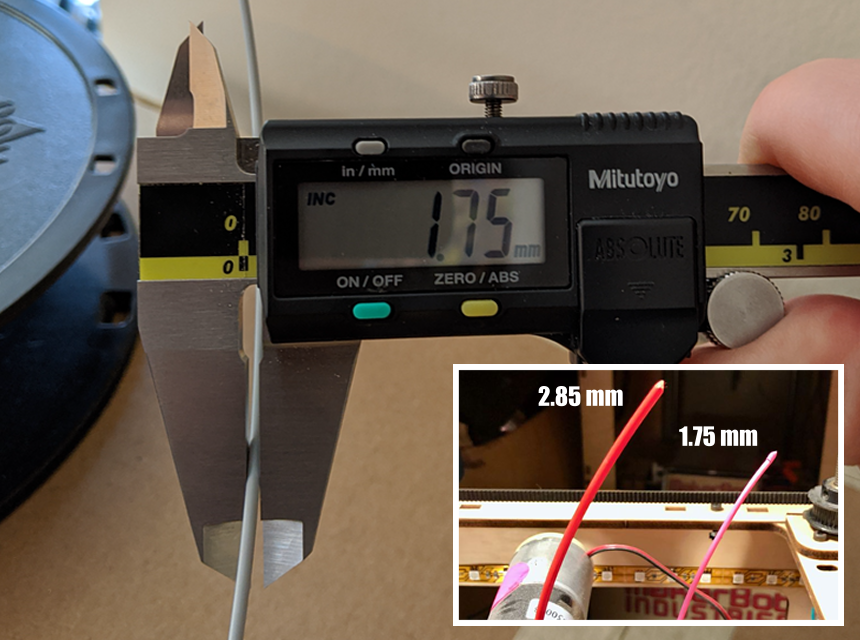
Essentially, PLA filament comes in two sizes – 1.75 mm and 2.85 mm and is determined by how fast or slow the material producer pulls the frame through the die. It’s crucial to check your printer diameter and filament type before making your final decision. All the PLA filaments on our review list are 1.75 mm in diameter. The HATCHBOX often makes it to the best 1.75 PLA filament list!
It’s important to check the weight of the spools you’re considering vs. the size of the project. You don’t want the unfortunate circumstance where a project is almost finished, but the filament is finished first.
Adding a new filament midway could result in colors not blending.
We recommend buying extra to cover the whole project as well as any potential test fails. Generally, a spool of 1kg can provide you with an average of 50 printing hours. The options on our list include the SUNLU PLA Filament with a weight of 1 kg. The PLA Filament by MIKA3D Store, on the other hand, is available in 6 kgs made up of 12 different colors, each with a weight of 500g.
The recommended temperature for PLA ranges between 190 and 220°C. Ensuring that your PLA filament reaches the right temperature will prevent flimsy end results.
Always opt for a filament that prints within the 190 and 220°C range.
On our list, the PLA Filament by MIKA3D Store has a temperature range of 195-230℃ (383-446°F). The HATCHBOX PLA 3D Printer Filament, on the other hand, has a temperature of 180-210°C (356-410°F).
Diameter accuracy, more commonly referred to as tolerance, indicates how accurately the diameter filament stays throughout the spool. It’s crucial to have a consistent diameter to produce quality prints.
Using inconsistent filament sizes can lead to clogs, jams, and even mechanical failures on your printer.
Many brands have a tolerance of 0.5mm, meaning the PLA filament is 0.5mm larger or smaller than advertised at certain points in the spool. On our list, the CREALITY 3D PLA 3D Printer Filament has a dimensional accuracy of 0.02 mm, whereas the HATCHBOX PLA 3D Printer Filament has an accuracy of 0.03 mm, which goes a long way to ensuring quality prints.
PLA Filament is available in a variety of colors which is another reason it’s the perfect option for doing your projects exactly according to specification. Before you settle for a specific type of PLA filament, check the colors available. Most PLA options, such as the Amazon Basics PLA 3D Printer Filament and the SUNLU PLA Filament, have a variety of colors on offer. Other units, such as the FlashForge PLA, have a limited color pallet.
Checking the customer reviews of the option you’re considering is important to establish how other users find its performance. Ideally, you want a filament that you can use at a speed of 60mm/s and a nozzle temperature of 210°C. You’re also looking for a heated bed temperature of 60°C. No matter what brand you opt for, the recommended settings should be printed on the packaging of the spool.
We trust our comprehensive review of the ten best PLA filaments will make it easier for you to choose the perfect option for your next project. Still not sure which PLA product to opt for? Let’s recap our three favorites. Our editor’s choice, the ANYCUBIC PLA 3D Printer Filament, is impressive because it’s accurate and consistent. With a tolerance of 0.02 mm, you’re guaranteed smoother finishes for your projects. The PLA Filament by MIKA3D Store made it to our premium pick because its 12-in-1 color bundle is value for money. It’s great for beginners! Lastly, our best value option, the CREALITY 3D PLA 3D Printer Filament, is well worth considering because it offers superb layering and excellent glossiness on the final product.
Combining the information from our review with the list of features from our handy buying guide will make choosing the best PLA filament for your next 3D printing project so much simpler!
